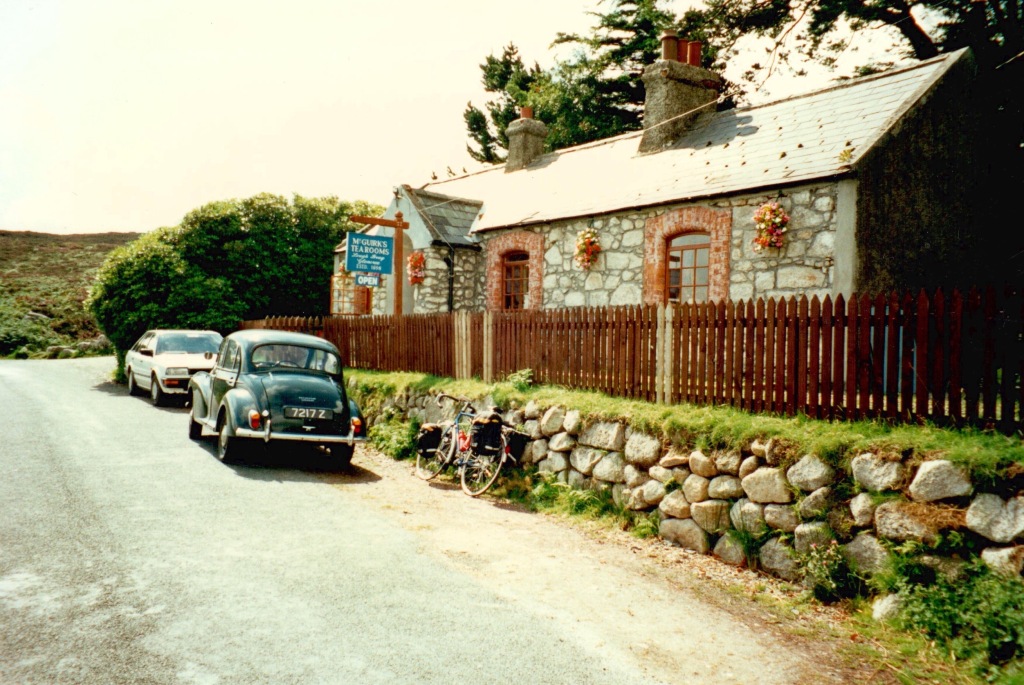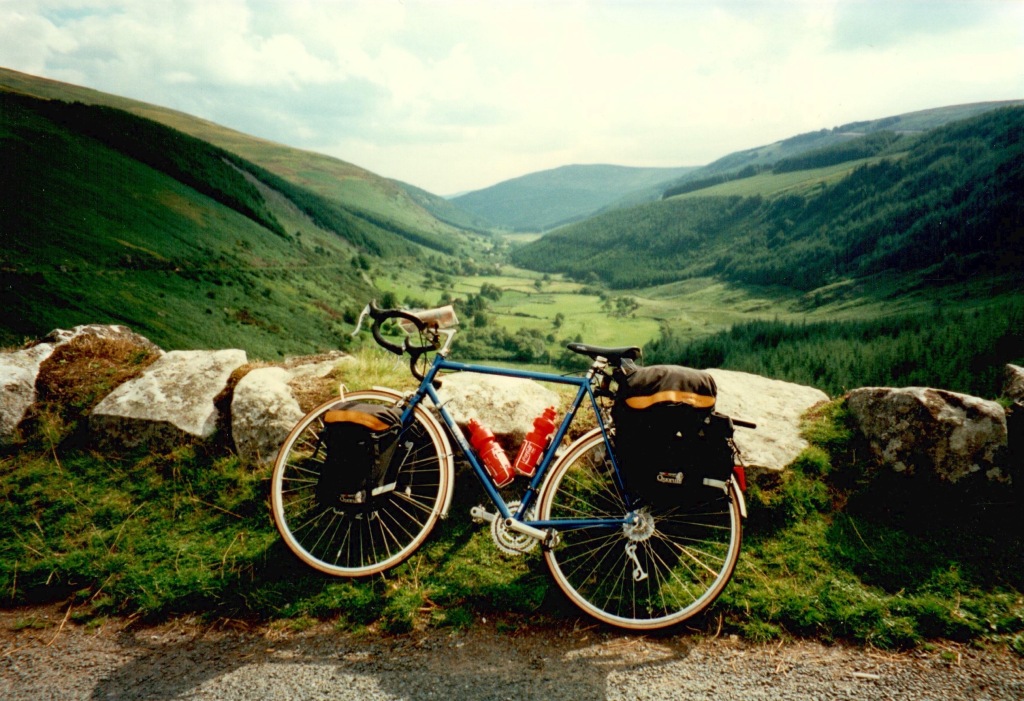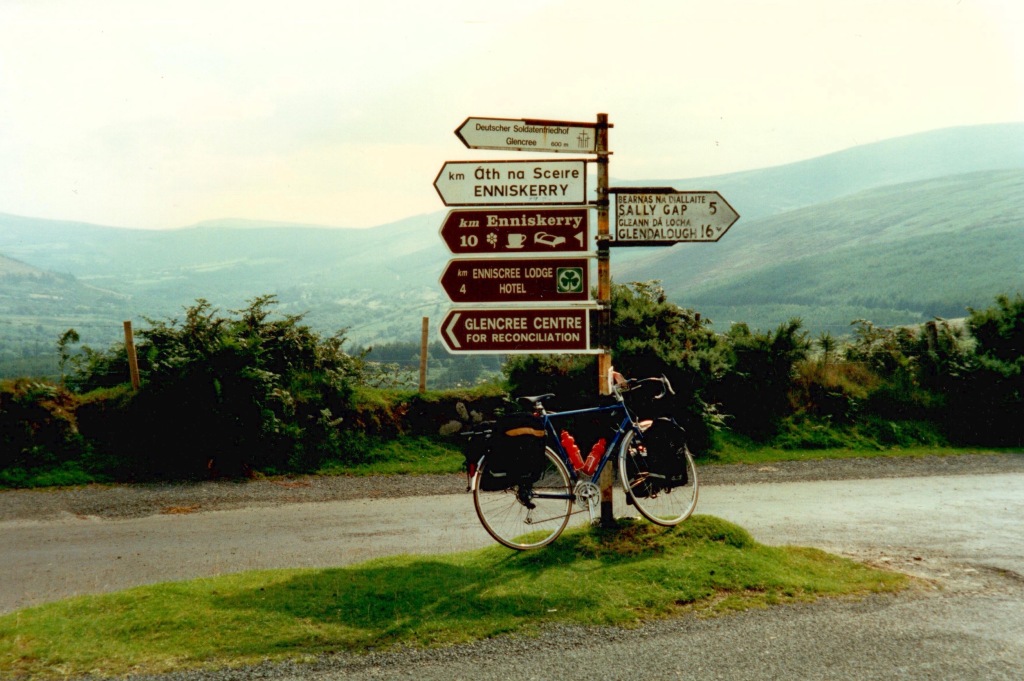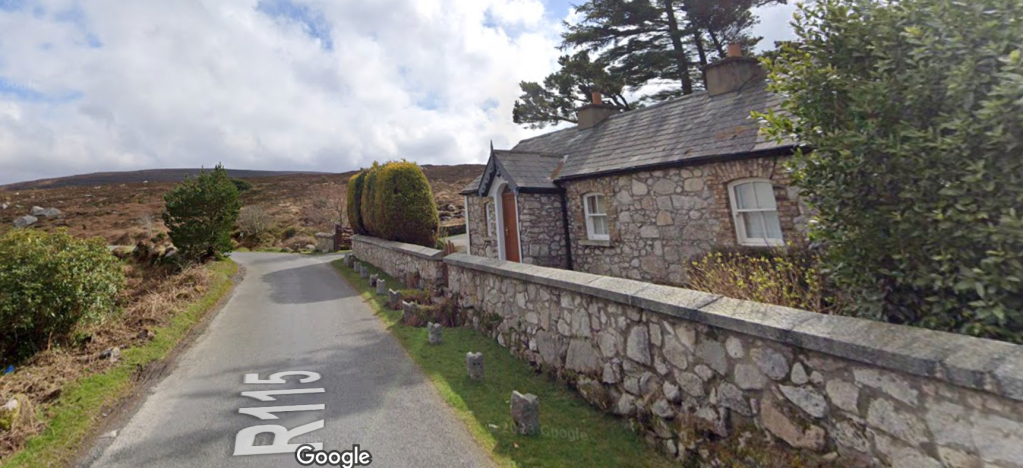
Little did I know when I popped into McGuirk’s tea rooms on a 1996 cycling tour from Dublin to Rosslare that I was entering an Irish institution.
I was intrigued by the old-fashioned sign, and the Morris Minor parked outside. (I’ve always had a soft spot for the classic 1948 car.) I enjoyed a pot of tea and snack before continuing over the old military road (the R115) towards Laragh and Glendalough via the intriguingly named Sally Gap.

The route was opened in the early 19th century to enable the British army to subdue any future insurrections after the Irish rebellion of 1798. I cycled from Dublin, climbing out of the city on my audax bike. I was very lucky with the August weather – warm and sunny – but sensed that it would be a wild ride in a storm, especially as the summit is the highest paved public road in Ireland at 523 metres (1,715 feet).

I was following a scenic route to Rosslare in Brendan Walsh’s Irish Cycling Guide, and found it a delight. I hoped to stay in historic Glendalough, just off the military road, but couldn’t get a room there, and stayed at Laragh instead. By coincidence I bumped into people I worked with at the pub that evening.
Over the following days, I enjoyed making my way down the coast to Rosslare, staying at Courtown and then getting the ferry back to Wales. I carried on my bike the colours of Wexford’s hurling team, who were about to win the all-Ireland hurling championship. Wexford was en-fête when I stayed there on my way up to Dublin to start my cycle tour, and I got into the party spirit. I even bought a t-shirt with the legend What’s the Glory, Martin Storey?, twisting the title of that year’s Oasis hit with the name of Wexford’s captain.
But back to McGuirk’s tea rooms. It obviously made an impression on me as I still remember the name 28 years on. Sadly, it has long since closed down, but an internet search shows what a legendary place it was. A new book, Tales from a Wicklow Tea Room 1898 – 1960 by Michael Fewer explains how the author found eight volumes of the cafe’s visitor book, which featured signatures and comments by many influential Irish people, including the founder of Sinn Féin Arthur Griffith, playwright JM Synge, and the journalist and politician Conor Cruise O’Brien. This lonely building had become a famed meeting place for writers, poets, artists, politicians and lawyers.

Judging from this Google Maps image, the old team rooms are now a private house. For such a legendary place it’s curious that there’s so little about it online, apart from Michael Fewer’s recent book. I wonder if the residents are aware that their home once hosted some of the most famous names in 20th century Irish society?

Pingback: May 8th 2024 | Knocklyon History Society
I remember as a young boy being in Mrs McGuirks house. My father was in the Gardai and travelled to Lough Bray to cut turf in the bog close to McGuirks. Many Gardai travelled with their bikes and my brother and I did so on occasions.
What a lovely story – thanks for sharing, Harry!